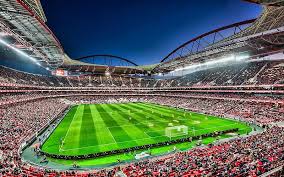Moreover, the sense of belonging felt by fans during matches at the Estadio da Luz is palpable. With its vibrant atmosphere, the stadium transforms into a cauldron of noise and energy, giving Benfica players an undeniable home-field advantage. This connection between the club and its supporters solidifies the stadium’s reputation as a fortress that intimidates visiting teams SBOTOP link.
The History and Evolution of Estadio da Luz
To understand the full significance of the Estadio da Luz, one must delve deep into its history—an evolution marked by ambition, dedication, and incredible milestones.
Originally built in the 1950s, the stadium has witnessed dramatic transformations that have helped shape the story of Benfica and its supporters. The evolution of the Estadio da Luz reflects the growth of both the club and Portuguese football itself, symbolizing a relentless pursuit of excellence.
Origins and Early Years of the Stadium
The story of the Estadio da Luz began in 1954 when it was inaugurated as Benfica’s new home, replacing the old Estádio das Amoreiras. Designed by architect Fernando Pires Ferreira, it was ahead of its time, boasting a capacity of nearly 120,000 spectators in its early years.
The inaugural match featured Benfica against the Spanish giants Real Madrid, which set the tone for the stadium’s relationship with high-stakes football. The early years saw the club achieving remarkable successes, including multiple league titles and domestic cups, solidifying the stadium’s place as the heart of Portuguese football.
Major Renovations and Upgrades Over the Years
As the demands of modern football grew, so did the need for upgrades and renovations to the Estadio da Luz. The stadium underwent a significant renovation in preparation for UEFA Euro 2004, which brought about not only a facelift but also advanced facilities that enhanced the match day experience for fans.
These renovations turned the Estadio da Luz into a state-of-the-art venue while preserving its historical essence. The capacity was reduced to approximately 65,000 seats, allowing for a more intimate atmosphere combined with contemporary comfort and amenities.
How it Became a Modern Football Landmark
With a history steeped in triumph and transformation, the Estadio da Luz emerged as a modern landmark in football. This transition was marked by hosting prestigious events beyond just club matches, including international tournaments and Champions League fixtures.


